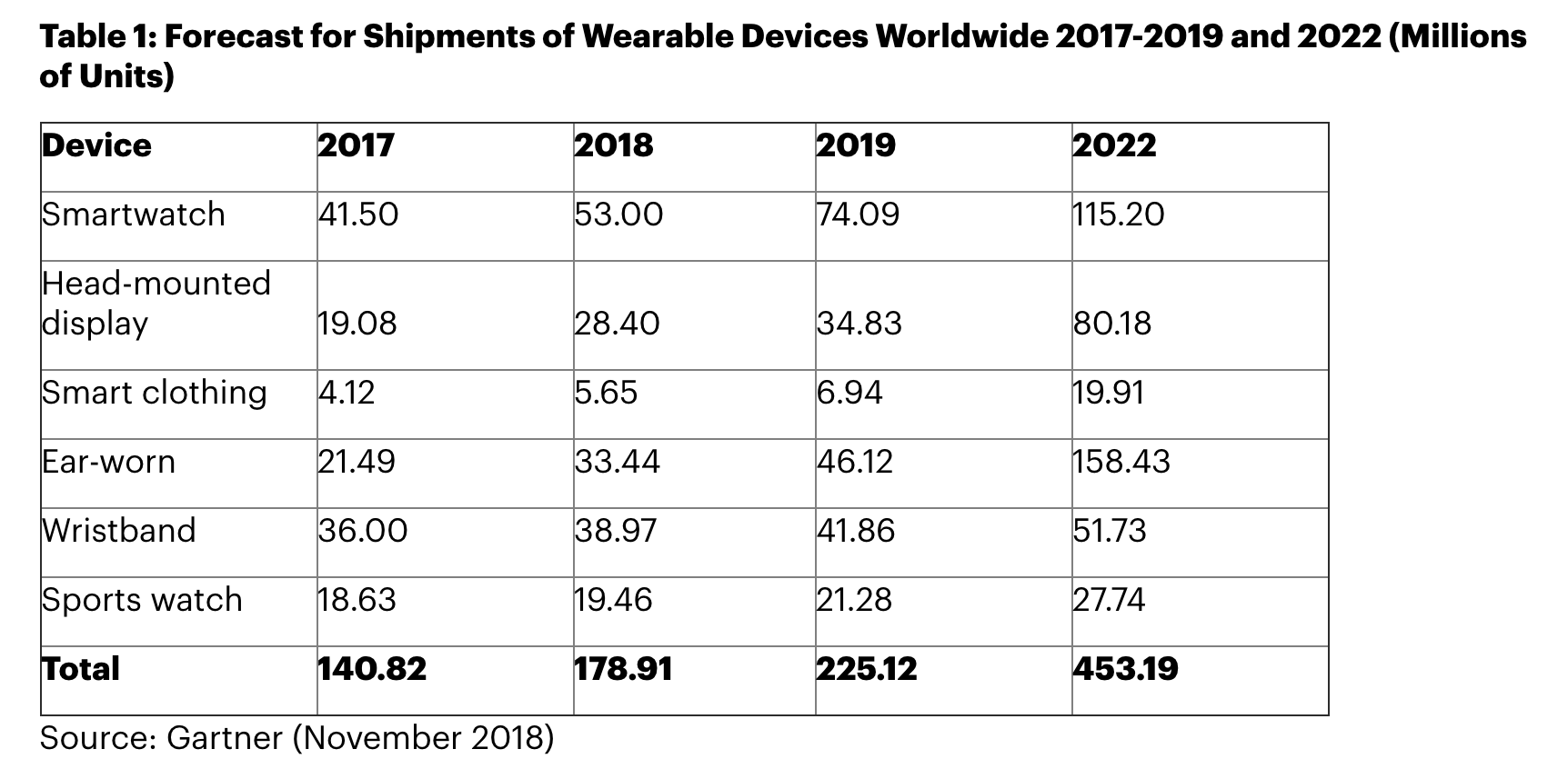New numbers from Gartner this morning show solid projections for the wearable market, in spite of few relatively lackluster years following following the category’s initial explosion. The drivers for the projected growth should be no surprise to anyone whose been following it of late — namely smartwatches and ear-worn devices (the unfortunately named hearables).
Overall, Gartner his predicting a jump in shipments in excess of 25 percent in 2019, up to 225 million, from 179 million. That number is expected to continue to increase all the way up to 453 million by 2022.
Smartwatches — led by Apple, Samsung and relatively recent entrant Fitbit — are a key factor, growing from 53 million units shipped to 74 million, and then up to 115 million by 2022. Impressive, if it plays out accordingly, though interestingly, average selling price is expected to drop over that timeframe by ~$11 per device.

That’s a product of lower-priced competition for the industry leading Apple Watch. We’ve already seen Fitbit undercut the competition pretty dramatically with the $150 Versa. How that will square with costlier health components like Apple’s ECG, however, remains to be seen.
Ear-worn devices — namely bluetooth earbuds like Apple’s AirPods and Samsung’s IconX — are the other big driver. Gartner suggests they’ll account for nearly a third of the wearables market by 2022.
Comments
Post a Comment